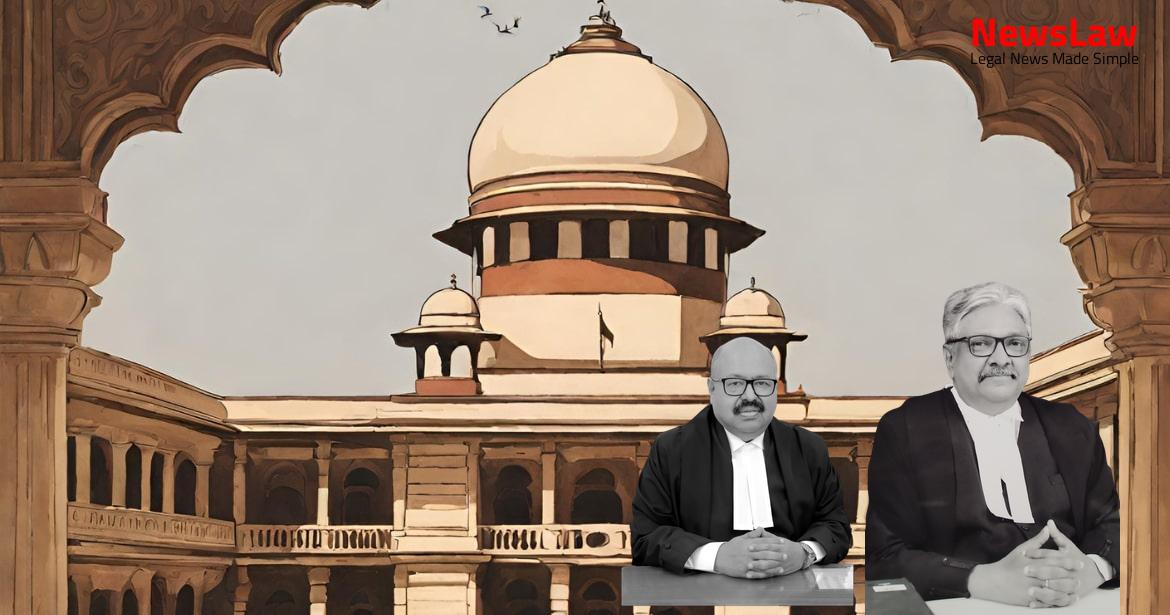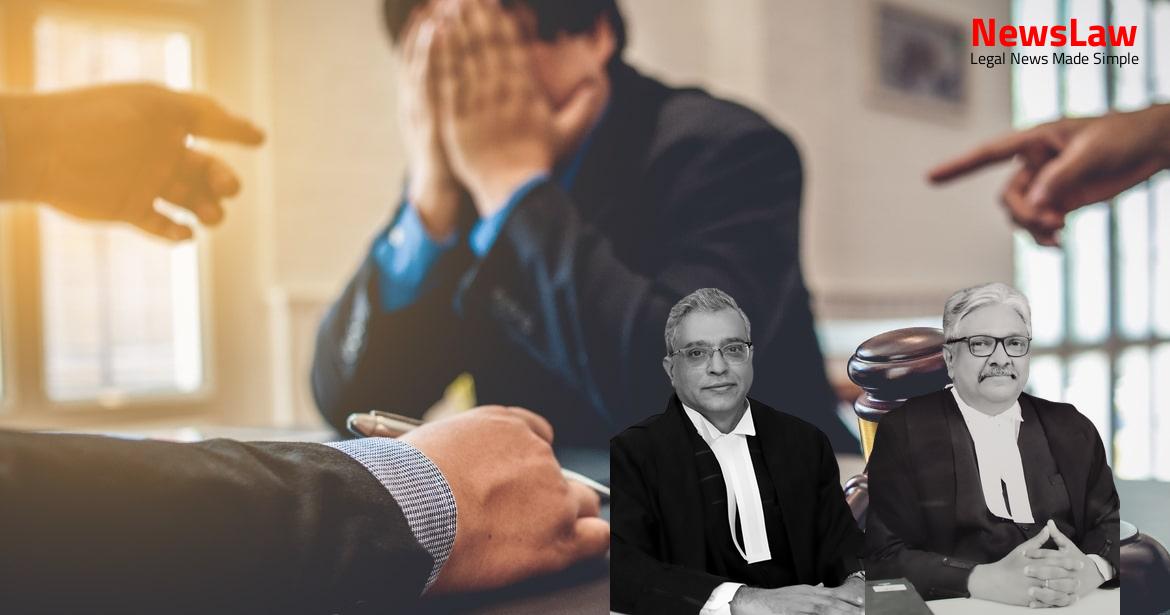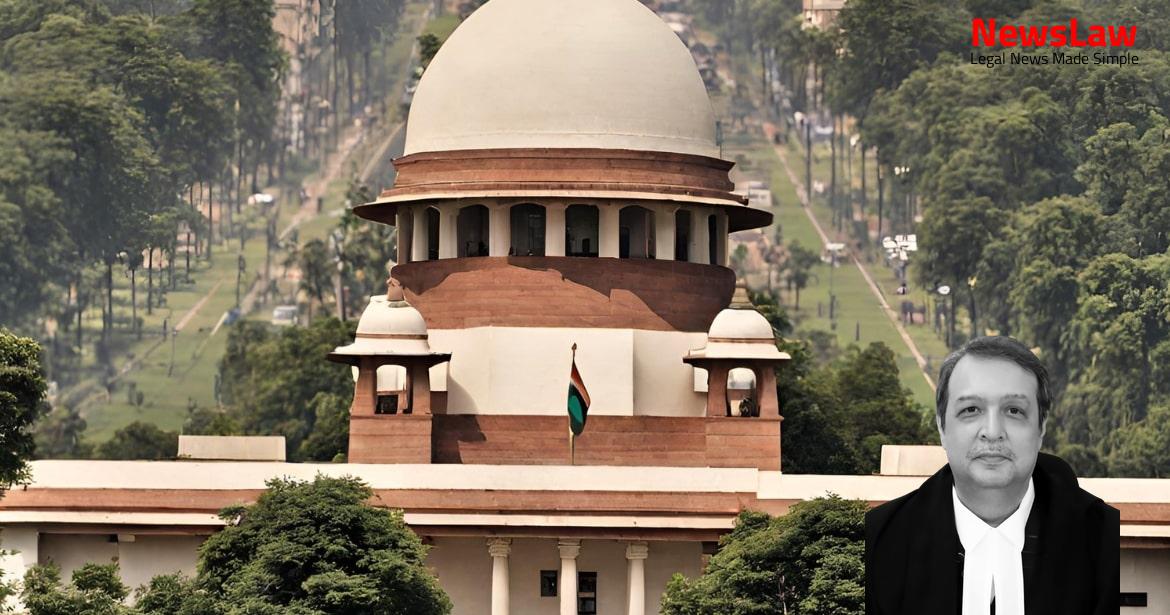In a recent legal case, the court provided valuable insights into the factors and analysis considered when making bail decisions. Understanding the guidelines set by the court can shed light on the complexities involved in determining bail in various situations. This blog delves into the crucial legal analysis offered by the court, offering clarity on how bail decisions are made and the considerations that come into play. Stay tuned to learn more about the intricate world of legal proceedings and court decisions.
Arguments
- Seriousness of the charge and severity of punishment are to be considered in determining whether to grant bail.
- Economic offences are not completely taken out of the guidelines but are of a different nature.
- The decision of the Punjab and Haryana High Court in Dharam Pal case only lays down guidelines and not any invariable rule.
- The guidelines provided by learned Additional Solicitor General and learned senior counsel categorize offences and lay down guidelines for grant of bail without fettering the discretion of the courts.
Also Read: Supreme Court Judgment on Single Till Mechanism for HRAB Calculation: A Comprehensive Analysis
Analysis
- Section 436A of the Code sets the maximum period for which an undertrial prisoner can be detained.
- The courts are urged to consider the delay in trial, especially in cases where the appeal or revision is pending, as a factor for favorable release on bail.
- The provision of Section 436A aims to ensure an expeditious investigation and a fair trial, particularly benefitting the indigent sections of society.
- The court should balance personal liberty and societal interests before issuing warrants.
- Implementation of action plans and regular monitoring are essential for the speedy disposal of undertrial cases.
- Courts are reminded that bail is the rule and jail is the exception, and discretion in arrest should be exercised judiciously and sparingly.
- Recorded reasons for arrest and scrutinizing factors for bail, such as financial means, are crucial for proper application of the law.
- The delay in trial by itself constitutes denial of justice and disregards the right to a fair and speedy trial under Article 21 of the Constitution.
- The provisions of Section 41 and 41A of the Code are seen as facets of Article 21, emphasizing personal liberty as a constitutional right.
- Strict adherence to procedural compliance and judicial scrutiny is highlighted to prevent unnecessary arrests and ensure fair trial proceedings.
- Section 167(2) of the CrPC provides time limits for remand of the accused, balancing investigation needs with protecting civil liberties.
- Section 439 of the CrPC deals with bail for non-bailable offenses by courts other than High Court or Court of Sessions.
- Precedents emphasize the fundamental right to personal liberty and the need for balanced discretion in granting bail.
- The right to default bail under Section 167(2) is an integral part of the right to personal liberty under Article 21.
- The historical context and legislative intent behind Section 167(2) ensure quick trials to prevent arbitrary detention.
- Presumption of innocence is fundamental, placing the burden on the prosecution to prove guilt.
- Global legal principles prioritize personal liberty and presumption of innocence in bail considerations.
- Legal provisions and court precedents stress the importance of fair procedures and judicial discretion in bail decisions.
- Provisions like Section 167(2) must be interpreted to safeguard personal liberties as per Article 21 of the Constitution.
- Balancing public safety and individual rights is crucial in bail decisions to avoid arbitrary detention.
- Non-compliance with Section 41 shall benefit the person suspected of the offense.
- Courts must ensure compliance with Section 41A before considering bail applications.
- Section 41A outlines the procedure for appearance before a police officer and the conditions for release on bail.
- Section 437 discusses when bail may be taken in case of non-bailable offenses.
- Section 309 emphasizes the timely completion of trials and the avoidance of unnecessary adjournments.
- Delays in trials violate Article 21 and must be avoided, especially for accused persons in custody.
- Section 309(1) mandates the continuation of proceedings on a day-to-day basis till the completion of evidence.
- Efforts must be made to complete trials expeditiously, especially for undertrials in custody.
- Section 88 confers discretion to the court to issue a warrant or summons for appearance.
- The word ‘may’ in Section 88 indicates discretionary power for the court.
- Police officers must have valid reasons and written records for arrests under Section 41A and Section 88.
- Bail applications should be disposed of within one week as per the directions issued by the court.
- Magisterial and sessions trials involving accused persons in custody should be concluded within specified timeframes.
- Undertrials who have completed custody exceeding potential sentences should be released on personal bond.
- Arrests must be strictly in accordance with the law, justified by valid reasons.
- Section 167(2) emphasizes completing investigations within specified timeframes.
- Courts may issue directions to ensure lawful arrests and adherence to procedural requirements.
- The Nagpur Judicial Judgment supported the view of the speaker.
- The speaker’s perspective was in alignment with the old Judgment of Nagpur Judicial.
Case Title: SATENDER KUMAR ANTIL Vs. CENTRAL BUREAU OF INVESTIGATION (2022 INSC 690)
Case Number: MA-001849 / 2021



